Growing Carrots in Containers might sound like a challenge, especially if you’re short on garden space, but trust me, it’s totally doable – and incredibly rewarding! Have you ever imagined plucking fresh, vibrant carrots straight from your patio or balcony? That’s the magic we’re unlocking today!
For centuries, carrots have been a staple in diets around the world, with evidence suggesting their cultivation dates back to ancient times. While traditionally grown in sprawling fields, the beauty of modern gardening is its adaptability. We’re no longer limited by vast landscapes; we can bring the farm to our homes, even if it’s just a small corner.
But why bother growing carrots in containers? Well, for starters, it’s a fantastic way to enjoy fresh, organic produce without the hassle of dealing with large garden beds. Plus, container gardening gives you greater control over soil quality, watering, and pest management. Imagine the satisfaction of knowing exactly where your food comes from and that you nurtured it from seed to table. In this article, I’m going to share my favorite tips and tricks for successfully growing carrots in containers, ensuring you get a bountiful harvest, no matter your space constraints. Let’s get digging!
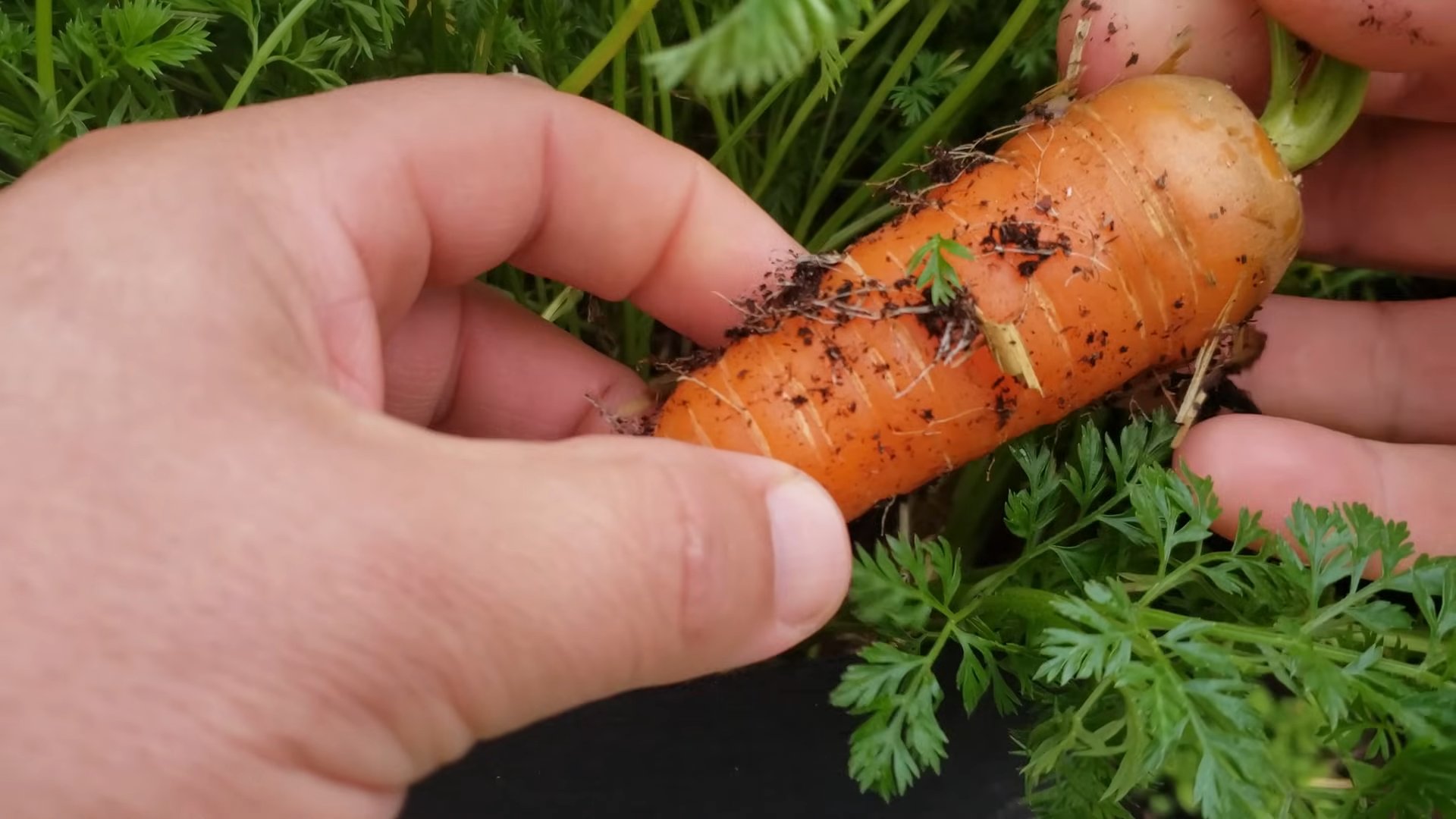
Growing Carrots in Containers: A Bumper Crop on Your Balcony!
Hey there, fellow gardening enthusiasts! Ever dreamed of pulling vibrant, crunchy carrots straight from your own backyard (or balcony!)? Well, guess what? You absolutely can, even if you’re short on space. Growing carrots in containers is surprisingly easy and rewarding. I’m going to walk you through everything you need to know to get started, from choosing the right container and soil to harvesting your delicious bounty. Let’s get digging!
Choosing the Right Container and Carrot Variety
Before we get our hands dirty, let’s talk about the essentials: the container and the carrot seeds. This is crucial for success, so pay close attention!
* Container Depth is Key: Carrots need room to grow downwards. Forget those shallow window boxes! You’ll need a container that’s at least 12 inches deep for shorter varieties like ‘Thumbelina’ or ‘Parisian’. For longer varieties like ‘Nantes’ or ‘Danvers’, aim for 18-24 inches. The deeper, the better!
* Material Matters (Less): Plastic, terracotta, even repurposed buckets – the material isn’t as important as the depth and drainage. Just make sure your container has drainage holes at the bottom. Soggy carrots are unhappy carrots.
* Size for Success: The width of your container depends on how many carrots you want to grow. A 12-inch diameter pot can comfortably house 5-7 carrots. Don’t overcrowd them; they need space to develop.
* Choosing Your Carrot Variety: This is where the fun begins! Consider the space you have and your personal preferences.
* Short Varieties (Thumbelina, Parisian): Perfect for smaller containers and those who want quick results. They mature faster.
* Medium Varieties (Nantes, Chantenay): A good all-around choice, offering a balance of size and flavor.
* Long Varieties (Danvers, Imperator): Need the deepest containers but offer the classic, long carrot shape.
* Seed Quality: Always buy fresh, high-quality seeds from a reputable source. Check the expiration date on the packet. Old seeds may have a lower germination rate.
Preparing Your Container and Soil
Now that we’ve got our container and seeds sorted, let’s get the growing medium ready. Carrots are picky about their soil, so this step is super important.
* Drainage is Non-Negotiable: Carrots hate sitting in water. Ensure your container has adequate drainage holes. You can even add a layer of gravel or broken pottery at the bottom to improve drainage.
* The Perfect Soil Mix: Carrots thrive in loose, well-draining soil. Avoid heavy clay soils, as they can cause stunted or misshapen roots. I recommend a mix of:
* Potting Mix (50%): Provides essential nutrients and good water retention.
* Sand (25%): Improves drainage and aeration. Use coarse sand, not play sand.
* Compost (25%): Adds organic matter and boosts fertility.
* Mixing it Up: Thoroughly mix the potting mix, sand, and compost in a large container or on a tarp. Make sure there are no clumps.
* Filling the Container: Gently fill your container with the soil mixture, leaving about an inch or two of space at the top. Lightly pat down the soil to remove air pockets.
* Pre-Watering: Before planting, thoroughly water the soil until it’s evenly moist but not soggy. This helps settle the soil and provides a good starting point for your seeds.
Planting Your Carrot Seeds
Alright, it’s time to get those seeds in the ground! This is where the magic happens.
1. Spacing is Key: Carrots need space to develop properly. Sow seeds about ½ inch deep and 1-2 inches apart. If you’re planting in rows, space the rows about 3-4 inches apart.
2. Sowing the Seeds: Gently sprinkle the seeds over the surface of the soil. Don’t overcrowd them! It’s better to thin them out later than to have a tangled mess of roots.
3. Covering the Seeds: Lightly cover the seeds with a thin layer of soil. You can also use vermiculite or fine sand.
4. Gentle Watering: Gently water the soil using a watering can with a rose head or a spray bottle. Avoid blasting the seeds with a strong stream of water, as this can dislodge them.
5. Maintaining Moisture: Keep the soil consistently moist but not soggy. Carrots need moisture to germinate and grow. Check the soil daily and water as needed.
6. Patience is a Virtue: Carrot seeds can take 1-3 weeks to germinate, depending on the temperature and moisture levels. Be patient and don’t give up!
Caring for Your Growing Carrots
Once your carrot seedlings emerge, it’s time to provide them with the care they need to thrive.
1. Thinning the Seedlings: This is crucial for healthy carrot development. Once the seedlings are about 2 inches tall, thin them out to 1-2 inches apart. Gently pull out the weaker seedlings, being careful not to disturb the roots of the remaining ones.
2. Sunlight is Essential: Carrots need at least 6 hours of sunlight per day. Place your container in a sunny location. If you don’t have enough natural sunlight, you can supplement with grow lights.
3. Watering Wisely: Water deeply and regularly, especially during dry periods. Avoid overwatering, as this can lead to root rot. Check the soil moisture before watering.
4. Fertilizing for Growth: Carrots are not heavy feeders, but they benefit from occasional fertilization. Use a balanced, water-soluble fertilizer diluted to half strength. Fertilize every 2-3 weeks.
5. Weed Control: Keep the container free of weeds, as they can compete with your carrots for nutrients and water. Gently hand-pull any weeds that appear.
6. Protecting from Pests: Carrots can be susceptible to pests like carrot rust flies and aphids. Inspect your plants regularly and take action if you notice any signs of infestation. You can use organic pest control methods like insecticidal soap or neem oil.
Harvesting Your Delicious Carrots
The moment you’ve been waiting for! Harvesting your homegrown carrots is incredibly satisfying.
1. Knowing When to Harvest: Carrots are typically ready to harvest 60-80 days after planting, depending on the variety. Check the seed packet for specific maturity dates.
2. Signs of Readiness: The tops of the carrots should be visible above the soil surface. You can gently brush away some soil to check the size of the roots.
3. Gentle Extraction: To harvest, gently loosen the soil around the carrot with a trowel or fork. Then, carefully pull the carrot out of the soil, twisting it slightly as you pull.
4. Washing and Storing: Wash the carrots thoroughly to remove any dirt. Store them in the refrigerator in a plastic bag or container. They should last for several weeks.
5. Enjoying Your Harvest: Now comes the best part! Enjoy your delicious, homegrown carrots in salads, soups, stews, or simply as a healthy snack.
Troubleshooting Common Problems
Even with the best care, you might encounter some challenges along the way. Here are some common problems and how to address them:
* Stunted Growth: This can be caused by poor soil, lack of sunlight, or overcrowding. Make sure your soil is loose and well-draining, provide adequate sunlight, and thin out your seedlings.
* Forked or Misshapen Roots: This is often caused by rocks or other obstructions in the soil. Remove any rocks or debris from the soil before planting.
* Root Rot: This is caused by overwatering. Make sure your container has adequate drainage and avoid overwatering.
* Pest Infestations: Inspect your plants regularly and take action if you notice any signs of pests. Use organic pest control methods like insecticidal soap or neem oil.
* Bolting: This is when the carrot plant prematurely produces a flower stalk. It’s often caused by stress, such as extreme temperatures or lack of water. Provide consistent moisture and protect your plants from extreme temperatures.
Extra Tips for Carrot-Growing Success
Here are a few extra tips to help you achieve a bumper crop of carrots:
* Succession Planting: Plant a new batch of seeds every few weeks to ensure a continuous harvest throughout the growing season.
* Companion Planting: Plant carrots alongside other vegetables like onions, garlic, and rosemary. These plants can help deter pests and improve the flavor of your carrots.
* Mulching: Apply a layer of mulch around your carrot plants to help retain moisture, suppress weeds, and regulate soil temperature.
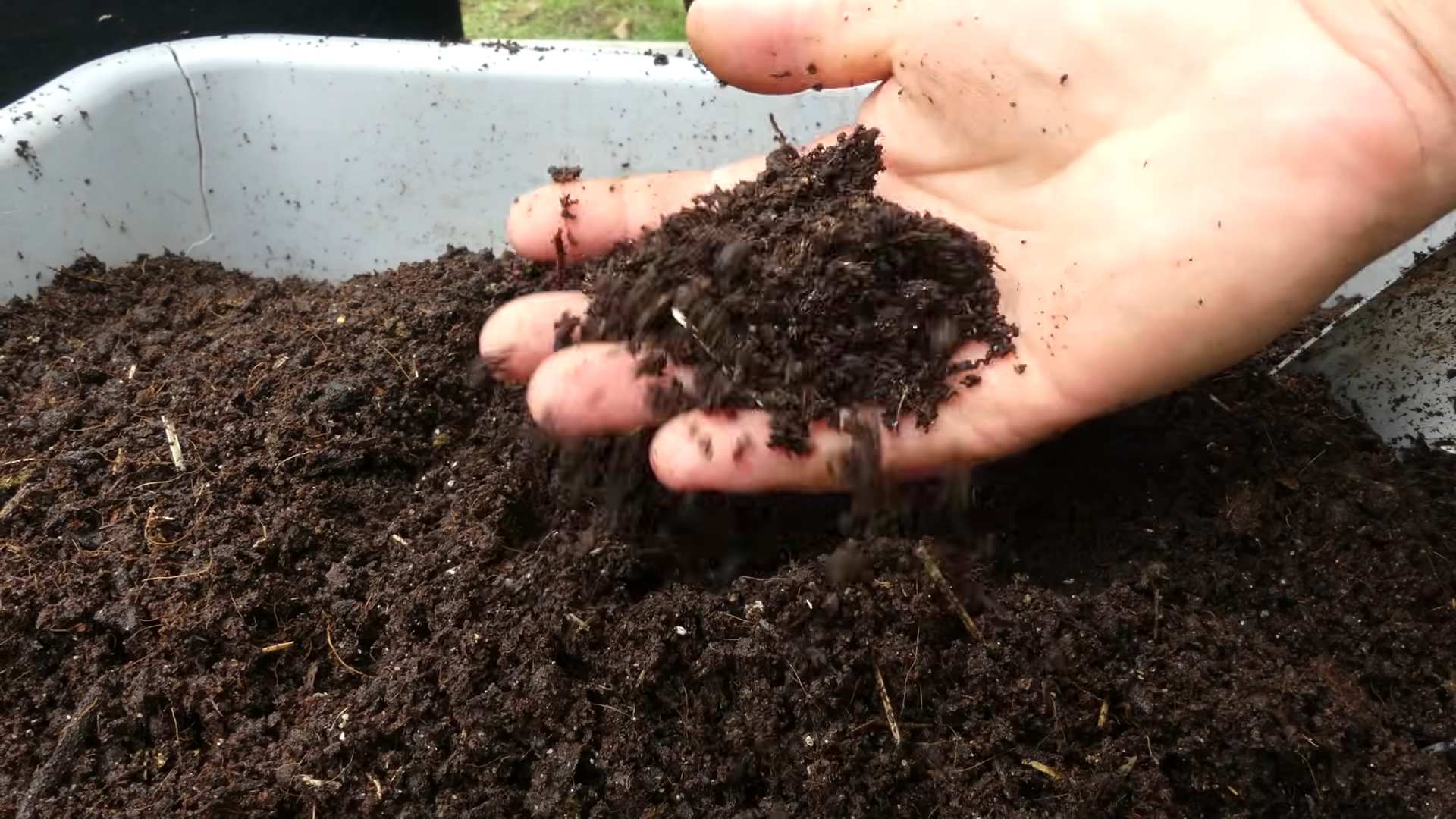
Conclusion
So, there you have it! Growing carrots in containers isn’t just a possibility; it’s a surprisingly rewarding and accessible gardening experience, even if you’re short on space or new to the world of cultivation. We’ve walked through the essential steps, from selecting the right container and soil to nurturing your seedlings and harvesting your vibrant, homegrown carrots.
Why is this DIY trick a must-try? Because it puts the power of fresh, delicious produce directly into your hands. Imagine the satisfaction of pulling up a perfectly formed carrot, knowing you nurtured it from seed to table. Think of the vibrant color and unparalleled flavor that surpasses anything you can find in a grocery store. And consider the sheer convenience of having a ready supply of carrots right outside your door, perfect for snacking, salads, or adding a burst of freshness to your favorite recipes.
But the benefits extend beyond just taste and convenience. Container gardening allows you to control the growing environment, protecting your carrots from soil-borne pests and diseases that might plague them in a traditional garden. It also makes it easier to manage soil quality, ensuring your carrots receive the nutrients they need to thrive. Plus, it’s a fantastic way to introduce children to the wonders of gardening and teach them about where their food comes from.
Don’t be afraid to experiment with variations! Try different carrot varieties to discover your favorites. Nantes carrots are a classic choice for containers, but consider exploring shorter, rounder varieties like Parisian carrots if you’re working with shallower pots. You can also companion plant with herbs like rosemary or sage to deter pests and enhance the flavor of your carrots. Another fun variation is to try succession planting, sowing new seeds every few weeks to ensure a continuous harvest throughout the growing season.
Growing carrots in containers is a gateway to a more sustainable and fulfilling lifestyle. It’s a chance to connect with nature, learn new skills, and enjoy the fruits (or rather, vegetables) of your labor.
We wholeheartedly encourage you to give this DIY trick a try. It’s easier than you might think, and the rewards are well worth the effort. Don’t be intimidated by the prospect of gardening; embrace the learning process and enjoy the journey.
And most importantly, we want to hear about your experience! Share your successes, your challenges, and your tips with us in the comments below. Let’s build a community of container carrot growers and inspire others to discover the joy of homegrown produce. What varieties did you try? What challenges did you face, and how did you overcome them? Did you discover any unique tips or tricks along the way? Your insights could be invaluable to other aspiring gardeners. So, get your hands dirty, plant those seeds, and let’s grow some amazing carrots together!
Frequently Asked Questions (FAQ)
What is the best size container for growing carrots?
The ideal container size depends on the carrot variety you choose. For longer varieties like Nantes, you’ll need a container that is at least 12 inches deep and 8 inches wide. Shorter, rounder varieties like Parisian carrots can thrive in shallower containers, around 6-8 inches deep. Remember, adequate depth is crucial for proper root development. A wider container also allows you to plant multiple carrots, maximizing your yield. Consider using fabric pots, as they promote air pruning, which encourages healthier root growth and prevents the carrots from becoming root-bound.
What type of soil is best for container carrots?
Carrots need loose, well-draining soil to develop properly. Heavy, compacted soil can lead to stunted growth and misshapen roots. A good potting mix specifically designed for vegetables is an excellent choice. You can also create your own mix by combining equal parts of compost, peat moss (or coconut coir), and perlite or vermiculite. The compost provides essential nutrients, the peat moss or coir helps retain moisture, and the perlite or vermiculite improves drainage. Avoid using garden soil, as it can be too heavy and may contain pests or diseases.
How often should I water my container carrots?
Consistent watering is essential for healthy carrot growth. The soil should be kept consistently moist, but not waterlogged. Water deeply whenever the top inch of soil feels dry to the touch. During hot, dry weather, you may need to water more frequently. Be careful not to overwater, as this can lead to root rot. A good rule of thumb is to water slowly and deeply, allowing the water to soak into the soil and reach the roots. Consider using a watering can with a gentle rose head to avoid disturbing the soil.
How much sunlight do carrots need?
Carrots need at least 6 hours of direct sunlight per day to thrive. Choose a location for your container that receives plenty of sunlight. If you live in a particularly hot climate, you may need to provide some afternoon shade to prevent the soil from drying out too quickly. If you don’t have access to a sunny location, you can supplement with grow lights.
When is the best time to plant carrots in containers?
The best time to plant carrots depends on your climate. In cooler climates, you can plant carrots in early spring, as soon as the soil is workable. In warmer climates, you can plant carrots in the fall for a winter harvest. Carrots can tolerate light frost, but they will not survive freezing temperatures. Check your local planting calendar for specific recommendations for your region. Succession planting, sowing new seeds every few weeks, is a great way to ensure a continuous harvest throughout the growing season.
How long does it take for carrots to grow in containers?
Carrots typically take 60-80 days to mature, depending on the variety. Check the seed packet for specific information on the maturity time for your chosen variety. You can start harvesting carrots when they reach the desired size. Small, young carrots are often sweeter and more tender than larger, more mature carrots.
What are some common pests and diseases that affect container carrots?
Common pests that can affect container carrots include aphids, carrot rust flies, and nematodes. Aphids can be controlled with insecticidal soap or neem oil. Carrot rust flies can be deterred by covering your containers with row covers. Nematodes can be a more challenging problem, but using nematode-resistant carrot varieties and practicing good soil hygiene can help. Diseases that can affect container carrots include leaf blight and root rot. Leaf blight can be prevented by ensuring good air circulation and avoiding overhead watering. Root rot can be prevented by ensuring good drainage and avoiding overwatering.
Can I grow other vegetables in the same container as carrots?
Companion planting can be beneficial for carrots. Good companion plants for carrots include onions, garlic, rosemary, sage, and marigolds. These plants can help deter pests and improve the flavor of your carrots. Avoid planting carrots near fennel, as it can inhibit their growth.
How do I know when my carrots are ready to harvest?
You can harvest carrots when they reach the desired size. Gently loosen the soil around the carrots and pull them up by the greens. If the soil is dry, water it thoroughly before harvesting to make it easier to pull the carrots.
Can I reuse the soil from my container carrots?
You can reuse the soil from your container carrots, but it’s important to replenish the nutrients. Amend the soil with compost or other organic matter before replanting. You may also want to sterilize the soil to kill any pests or diseases. You can do this by baking the soil in the oven at 200 degrees Fahrenheit for 30 minutes.

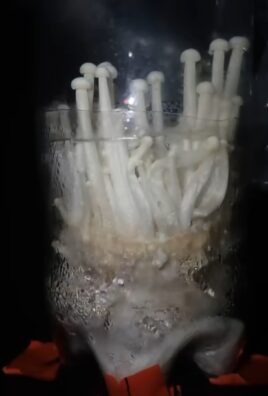
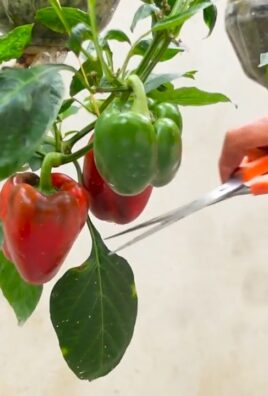
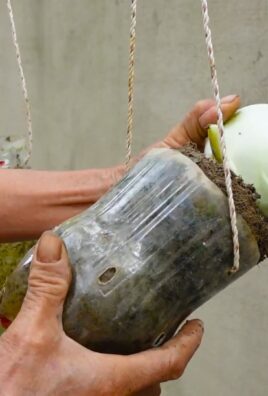
Leave a Comment